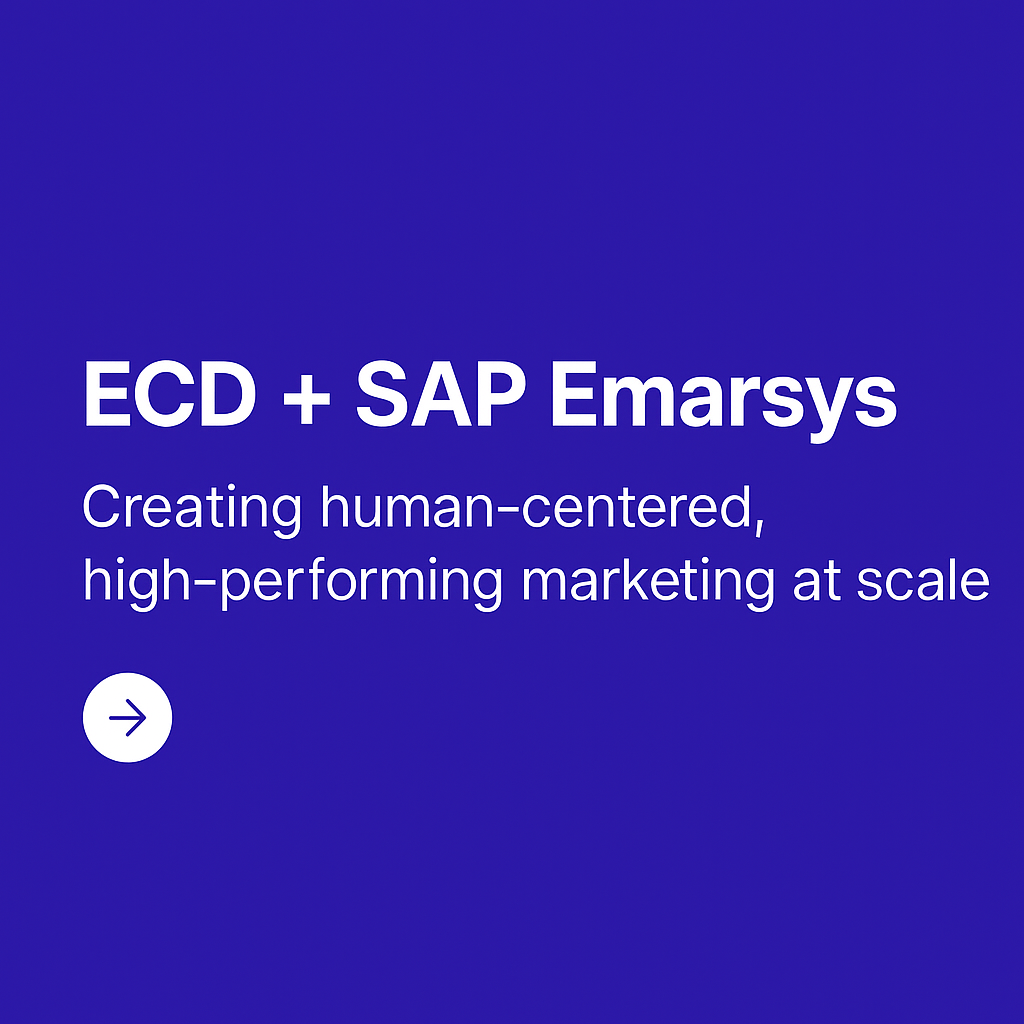Personalisation of the Digital Experience
We’re all aware of personalisation in marketing — think about how those emails you keep getting from a website you visited a few months ago are all eager to address you by your first name at every opportunity.
However, personalisation doesn’t end at companies addressing you by your name. There’s probably a lot more personalisation going on in your digital experience, it’s just so seamless that you might not notice.
Marketing has evolved from brands talking about their products and services to talking about how those products are relevant to you. They do this by leveraging the data they have - be that previous purchases, website browsing behaviour, or grouping you into profiles - they do so in the belief that it will help users reach their intended goal. In marketing this is known as customer centricity.
Personalisation of the Digital User Experience (UX)?
Personalisation of the digital user experience is a combination of two concepts:
- User Experience (UX) - how a user interacts with and experiences a digital product, service, or system (think about how you feel when an annoying popup follows you around a website).
- Personalisation - customising the digital experience based on the data available and offering content, products, experiences or functionality that is relevant to that person (think Amazon recommended products or Netflix recommended content).
Why is this important?
'We have access to so much data — personalisation is a way of putting it to use. It allows us to give people what they’re looking for, resulting in:
- Improved user engagement
- Better connection with the brand
- More leads
- Increased conversion rates
- ...and ultimately more revenue for the business
What’s more, people crave personalised experiences. Why look through lots of content that’s not relevant to you when a website can provide you with content that’s created just for you (and make the perfect first impression)?
The more websites embrace personalisation of the digital experience, the more people will come to expect it.
Goals of Personalisation
The end goal of websites, emails, apps, and other digital experiences is to get people to take a certain action (a conversion). A conversion can mean someone purchasing a product or service but it can also mean someone signing up to a newsletter or entering a competition — you set your goals and therefore the conversion you want to achieve.
Conversions are the return on investment for your brand.
A UX approach recognises that the experience is what has to come first though. Before you focus on your goals, you’ve got to focus on the user and ensure you’re offering an experience that helps them achieve their objectives with as little friction as possible.
As The Growth Hub says, “designing without consideration of your user group... is bound to set you up for failure.”
The aim of personalisation is to do this on a micro level. Rather than having exactly the same experience for all users, you can offer a number of experiences that can be tailored to fit what the individual is looking for.
Your user is on your website for a reason; your goal is to understand who they are and what they’re looking for, and provide them with the personalised experience that allows them to find it.
The Importance of Data in the Personalisation of Digital Experiences
Personalisation would be impossible without data, and it’s important on both sides of the digital experience.
First, you have to understand your audience.
If you’re going to provide people with a personalised experience, then you’ve got to understand what it is they want. Not everyone is looking for the same things, but how do you categorise people and understand the customer journey?
This is where data comes in. What does your data tell you about your audience?
You also need to ensure that you’re asking the right questions and interpreting the data to understand customer profiles. With the right information, you can begin to understand what people are interested in, enabling you to personalise the experience to them as an individual or place them into profiles (or segments).
Understanding your audience is key, but you’ve also got to be able to identify users in order to personalise their experience.
You have lots of different ways to identify your user and the information is there in the data:
- Email address or username
- Geo-location
- Traffic source (organic, paid, email, push notification)
- Browser (Chrome, Mozilla, Safari)
- Past engagement (number of site visits, page views, logins)
- Time since last visit
- Past content consumption (articles, videos)
- Purchasing history
Each piece of information tells you more about the user and makes it easier to serve them with the personalised experience they’re looking for.
Implementing UX Personalisation
Personalisation isn’t a magic fix for a poor website.
You need to start with good UX and then build on it with personalisation. The key thing is, it needs to be built on solid foundations. First, focus on a clean user experience, and analyse the data to better understand your audience. From here, you can integrate personalisation to ensure each user is getting a relevant, rewarding and valuable experience.
When you get personalisation right, it can have a big impact:
- 74% of customers feel frustrated when content isn’t personalised
- 80% of consumers are more likely to make a purchase from a brand that provides personal experiences
- 98% of marketers say personalisation advances customer relationships
- 66% of customers expect companies to understand their unique needs and expectations, yet 66% say they’re generally treated like numbers
Conclusion
Modern consumers expect personalisation, and we have the tools to give it to them.
When done well, personalisation can make a huge difference to the user experience, but if done poorly, it can mean a step backward for your website or app. As a consumer, you know how good it is when a website feels like it was almost made for you, but on the other side of the coin, you know how frustrating it is when a website doesn’t work properly.
You’ve got to get the balance right, and data is the key to this. All the information you need is there, you’ve just got to make sure you’re using it to guide your digital experience and encourage people through the customer journey.
Are you planning on personalising your user experience?
Latest thoughts & insights
Sydney
6 Middlemiss Street,
Lavender Bay 2060. Sydney
Peregian Beach
253-255 David Low Way,
Peregian Beach QLD 4573


